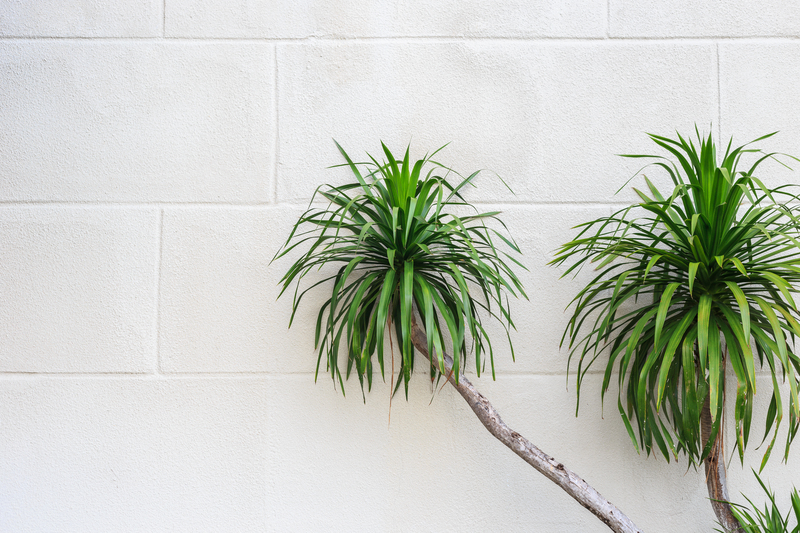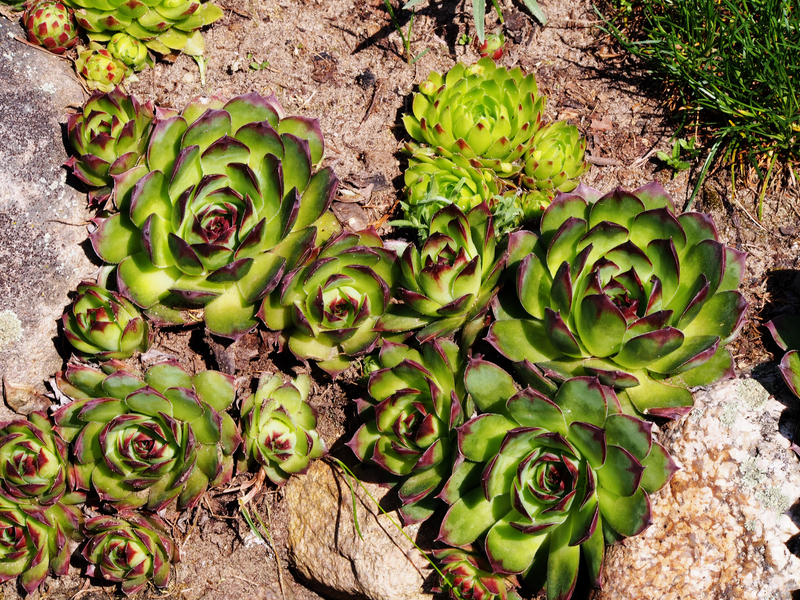Crafting a Perfect Garden for Dogs and Owners
Posted on 15/06/2025
Crafting a Perfect Garden for Dogs and Owners: An Ultimate Guide
A lush, vibrant garden is a haven of tranquility and joy for any homeowner. But when you share your life with a four-legged canine companion, your landscape needs to be both welcoming and safe for them. Designing a perfect garden for dogs and owners requires thoughtful planning, creativity, and an understanding of both human enjoyment and canine requirements.
In this comprehensive article, we'll explore how to transform your outdoor space into a shared paradise, combining dog-friendly features with the elements that make gardeners and their pets equally happy.

Why Create a Dog-Friendly Garden?
If you love spending time in your garden but worry about your dog's safety--or the safety of your prized plants--you're not alone! Gardens offer dogs the opportunity to run freely, explore, dig, and bask in the sunshine. Yet, traditional gardening designs often fail to consider the natural behaviors of dogs.
A dog-friendly garden doesn't just protect your plants; it enhances your dog's quality of life and can decrease behavioral issues by providing mental and physical enrichment. For owners, a thoughtfully designed garden means less stress, lower maintenance, and greater shared enjoyment.
Essentials of a Dog-Friendly Garden
1. Safe Plants for Dogs and Owners
When planning the ideal garden, start by researching pet-safe plants. Many common garden favorites can be toxic to dogs, even in small amounts. On the other hand, some plants are not only safe but also durable against playful paws.
- Dog-safe options: Marigolds, Sunflowers, Camellias, Roses (without pesticides), Snapdragons, Magnolias.
- Plants to avoid: Azaleas, Foxglove, Oleander, Daffodils, Hydrangea, Sago Palm, Lilies.
- Choose hardy groundcovers like clover or creeping thyme--they're safer than grass and recover faster from pet activity.
2. Durable and Comfortable Pathways
Consider the routes your dog naturally takes and incorporate winding paths that match their trails. Using materials like decomposed granite, flagstone, or mulch can provide texture and comfort for both bare feet and paws. Avoid sharp gravel or materials that become dangerously hot in the sun.
3. Secure Fencing and Gates
Every perfect dog garden starts--and ends--with security. Robust fencing keeps your furry friend inside and safe from outside dangers.
Key considerations:
- Height: Tailor the fence height to your dog's jumping and climbing skills.
- Material: Solid wood, heavy-gauge wire, or decorative wrought iron work well. Check regularly for gaps or weak spots.
- Visual barriers: Some dogs bark less if they can't see out. Plant hedges or install bamboo screens as needed.
4. Shady Retreats and Shelter
Dogs, like humans, need respite from the sun. Create shady areas with trees, pergolas, or shade sails. An insulated doghouse can also offer year-round protection from the elements.
- Avoid small enclosures that trap heat; ensure there's plenty of ventilation.
- Plant fast-growing trees or install awnings for instant shade.
5. Water Features for Fun and Cooling
Consider adding a dog-friendly water feature. Shallow streams, splash pools, or even a sturdy birdbath can provide entertainment and relief during hot months.
*Always supervise water play,* and keep all water sources clean to prevent parasites or algae growth.
Combining Dog and Human Needs in Your Garden Design
Practical Zoning: Design for Shared Spaces
To craft a garden that delights both dogs and owners, use garden zoning--partitioning your space into dog-centric and human-centric areas, which often overlap in harmonious ways.
- Pet play zones: Fenced-off lawns or gravel areas for fetch, agility, and play.
- Relaxation nooks: Benches shaded by trees, surrounded by aromatic herbs safe for dogs and people alike.
- Entertainment areas: Dining patios with washable surfaces, away from toilet zones.
- Gardening borders: Raised beds or clear edging to protect delicate plants.
Choosing Lawn Alternatives for Dog Gardens
A traditional lawn is beautiful but may struggle with dog urine burns and high foot traffic. Why not experiment with dog-proof turf alternatives?
- Clover: Naturally resistant to urine, lush, and soft.
- Artificial grass: Durable, easy to clean, though it can heat up in direct sun.
- Creeping thyme or Irish moss: Hardy, fragrant, and tolerate paws.
Hiding and Playing: Enrichment Structures
A dog's perfect garden features more than open lawns. Add enrichment by incorporating hiding spots, tunnels, or mounds. Dogs love to explore, dig, and investigate. Some ideas:
- Logs or hollowed stumps for hiding and climbing.
- Shallow, designated digging pits filled with sand to discourage destructive digging elsewhere.
- Sturdy tunnels or agility equipment for active breeds.
Safe Storage for Chemicals and Tools
Many garden chemicals, including fertilizers and pesticides, are hazardous to pets. Always store products securely out of reach and consider switching to organic, pet-safe alternatives for pest and weed control.
Tools like shovels, forks, and sharp objects should also be safely stored after use.
Planting for Privacy and Safety
Use dense shrubs, low hedges, or climbing vines to provide natural privacy from neighbors, while offering a buffer against street noise and outside animals.
- Privet, boxwood, or butterfly bush: Non-toxic, great for hedges.
- Trellised vines: Jasmine, honeysuckle, or grape (non-fruiting varieties) for visual interest.
Garden Maintenance Tips for Dog Owners
Proactive Yard Clean-Up
To keep your garden healthy and enjoyable, regularly remove waste and debris. Dog droppings can burn lawns and harbor parasites, so daily scooping is essential.
Paw prints muddy up flagstone and patios, so place mats at doors or build a mulch "paw wash" station by entrances.
Dealing With Wear and Tear
Heavy dog traffic can create bare patches and compacted soil. Rotate toys and encourage your dog to use different garden paths to minimize damage.
Periodically aerate your lawn and reapply mulch to high-traffic spots for rapid recovery.
Managing Pests and Hazards
Check frequently for ticks, fleas, or other pests, especially in dense foliage. Pet-friendly nematodes can reduce grubs, while natural sprays (like diluted neem oil) ward off pests with less risk to dogs.
Remove mushrooms promptly and check for sharp sticks or objects after storms.
Controlling Toxic Plants and Mushrooms
Some dangerous species can spread from neighboring yards or appear after rains. Get familiar with common toxic plants and mushrooms in your area and remove them immediately upon discovery.
Training Tips: Teaching Dogs Good Garden Behavior
- Supervised exploration: When first introducing your dog to the garden, supervise closely until they learn boundaries.
- Create clear rules: Use cues like "leave it" or "off" to prevent flowerbed digging or nibbling prohibited plants.
- Reward good behavior: Use treats and praise for using designated play or toilet areas.
- Consistent routines: Encourage bathroom breaks in a discrete corner, away from main lawn and entertainment spaces.
Features That Enhance Enjoyment for Dogs and Owners
Outdoor Furniture Choices
Opt for pet-friendly outdoor furniture. Benches and loungers made from weather-resistant, easy-to-clean materials are ideal. Consider raised beds for dogs to snooze beside you while you garden.
Entertainment for Humans and Hounds
- Fire pits: Secure covers and child/pet barriers are a must.
- Herb or vegetable gardens: Grow edibles in raised, fenced beds to prevent dog access.
- Lighting: Use solar LED lights for safe nighttime navigation--for both humans and pets.
Seasonal Considerations for a Year-Round Dog-Friendly Garden
Summer Safety
- Provide ample shade and fresh water at all times.
- Monitor for overheating--create doggy splash zones or offer frozen treats during hot spells.
Winter Wellness
- Remove ice and snow from paths to prevent paw injuries.
- Use pet-safe ice melts--ordinary salts can burn paws or be toxic.
- Offer dry shelters like insulated doghouses, barns, or garages.

Sustainability: Eco-Friendly Gardening for Pets and People
Being eco-conscious in your garden design benefits everyone:
- Use organic compost and mulches.
- Collect rainwater for irrigation.
- Plant native species for low maintenance and to attract pollinators.
- Encourage beneficial insects to control pests naturally, reducing need for chemicals.
Conclusion: Enjoying a Garden That Delights Dogs and Owners
A well-designed garden for dogs and owners is a balance of safety, beauty, and utility. By thoughtfully considering plant selection, secure boundaries, play zones, and maintenance, you'll craft an inviting outdoor escape that enriches both your and your furry friend's lives.
Whether you're an avid gardener, a new pet parent, or simply looking to enhance your backyard, these tips ensure your outdoor space becomes a true sanctuary for all--where every member of your home, human and canine alike, can relax, explore, and thrive.
Start Creating Your Dog-Friendly Garden Today
Investing in a garden tailored to dogs and their owners isn't just about convenience--it's about nurturing happiness, health, and connection with nature as a family.
Ready to get started? Grab your trowel, call your canine companion, and make your backyard dreams a reality!

